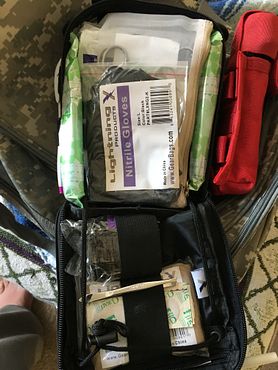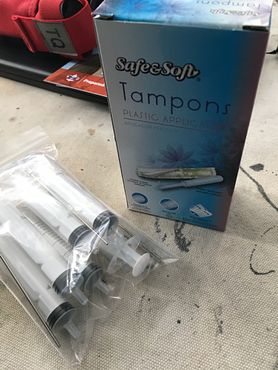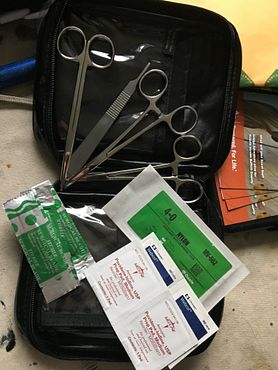The downside is that we decided the DTR Gear Base kit lacks a few items that we consider essential, and neither the Intermediate nor the Advanced kit offers a solution. None of the DTR Gear kits include a nasal tube, used for when the airway is obstructed and the first responder needs to intubate the patient to restore air movement. My friend has nasal tubes in all his kits. Discussing this with a friend who is a fellow veteran and who works as a nursing supervisor in the emergency room at a large Veterans Administration hospital, he agreed that a trauma kit should include a nasal tube, and he added that there should also be a small tube of KY Jelly for lubricating the tube for insertion.
...
We also didn’t like the either/or choice on the tourniquet. The SWAT-T type has some advantages in some situations, but for a major bleed on an arm or a leg it isn’t the best choice. We think that a fully equipped trauma kit should include both types of tourniquet. DTL Gear offers an option when ordering from their web site to add a second tourniquet, of either type, so for an additional $29.50 you can add the SOFTT-W to the Base kit.
Finally, there’s the question of the DTR Gear upgrade to a kit that includes Quickclot. Disclaimer: I have Quickclot, both the powder type and Quickclot pads, in the items I am assembling for my “bugout” bag trauma kit. My friend reported that his instructor advised against using Quickclot. I referred the question to the VA ER nursing supervisor, and his response was that medical professionals indeed do not like Quickclot, and also that it doesn’t work when/where you need it most. That would be a deep injury affecting an artery. The damaged artery is likely to be deep enough that the Quickclot can’t get to it to staunch the bleeding, so it just creates a mess for the ER doctors to deal with. Consequently, we can’t in good faith recommend the upgrade to the DTR Gear Advanced kit.
Overall, I give the DTR Gear Base First Aid Kit a solid B+ rating. It has almost everything that belongs in a well-prepared sportsman’s first aid kit, in a compact and portable carry bag that has enough space (barely) to add the nasal tube and second tourniquet that we believe should be in the kit.





